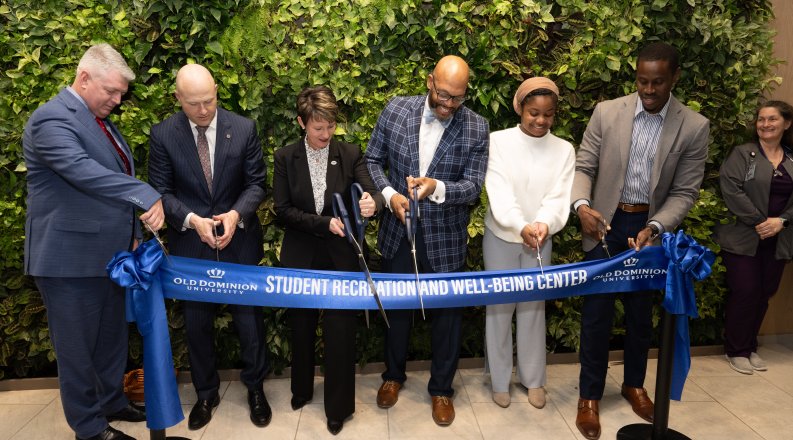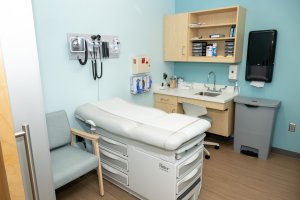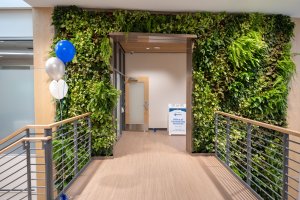Old Dominion University hosted an open house and ribbon-cutting ceremony for the new Student Recreation and Well-Being Center (SRWC) on Thursday, March 28.
The expanded space on 4700 Powhatan Avenue now houses the Student Recreation Center, the Office of Counseling Services, Student Health Services and the Health Promotion Office—all of which have relocated from Webb Student Center.
“The Student Recreation and Well-Being Center is yet another sign of our commitment to putting students first, but it also represents a one-stop shop on many levels,” said ODU President Brian O. Hemphill, Ph.D., during the ceremony. “We are truly committed to care for each student’s mind, body and soul. The idea of providing a holistic, well-rounded area that really focuses on health and well-being is something that we are proud of.”
Student Health Services is now located on the first floor of the SRWC, in Suite 1402. Both the Office of Counseling Services (Suite 2403) and the Health Promotion Office (Suite 2026) are on the second floor.
“Having well-being services centralized on campus is a great step forward in providing comprehensive programs and services for our students,” said Coulson Thomas, director of recreation and wellness.
Brandi Hephner LeBanc, vice president of Student Enrollment and Engagement Services (SCL), cited data that listed stress, anxiety and depression as leading academic impediments and that more than half of ODU students scored positive for loneliness and struggled to connect with their peers.
Which, she added, is why these integrated spaces are so important.
“Wellness and well-being are two distinct concepts that are keenly interrelated,” LaBanc said during the ceremony. “Wellness speaks to activities, practices and habits that contribute to your physical health, while well-being is a state of mind that encompasses your mental and emotional health.”
After the ribbon cutting, attendees were offered tours of all three spaces.
The new Student Health Services office provides ODU students with a multitude of services: more than 10 examination rooms, a tele-visit facility, an in-house lab (for blood work and other medical tests) and a procedure room.
Students can receive primary medical care including diagnosis and management of injuries, illnesses and chronic conditions. The center also provides wellness visits and preventative health screenings.
Students can also get multiple vaccinations, including for COVID-19. Other services include prescription management, lab testing, simple procedures, family planning and sexual health testing.
Counseling Services, which saw 2,100 students during the 2022-23 academic year, offers one-on-one counseling, as well as group therapy sessions and an on-site meditation room that students can book in advance.
Students also have access to consultation and psychiatric services, crisis intervention and a variety of workshops.
Group therapy topics range from coping with anxiety to LGBTQIA+-specific mental health needs to safety in relationships, physical activity and body image.
“With the co-location of services, there are more opportunities to provide a continuum of care,” said Dr. Joy Himmel, director of counseling services. “The benefit to students is focused on ease of access and normalizing help-seeking in the framework of well-being.”
The Health Promotion Office partners with campus organizations and the greater community to advance health and well-being. Through in-person and virtual events, as well as ODU students who serve as Monarch Wellness Ambassadors, the office helps students with mental and emotional well-being, substance abuse prevention, sexual health and stress management.
Contraceptives and menstrual products are available for free through the office and there is a dietitian on staff in Tracy Conder.
Throughout the open house, the theme was simple: student well-being is not one thing. It contains layers and treating the body need not be separate from treating the mind or the emotions.
In fact, for students to truly thrive personally and academically, all these things need to be considered.
As LaBanc put it: “This building represents the whole person.”





